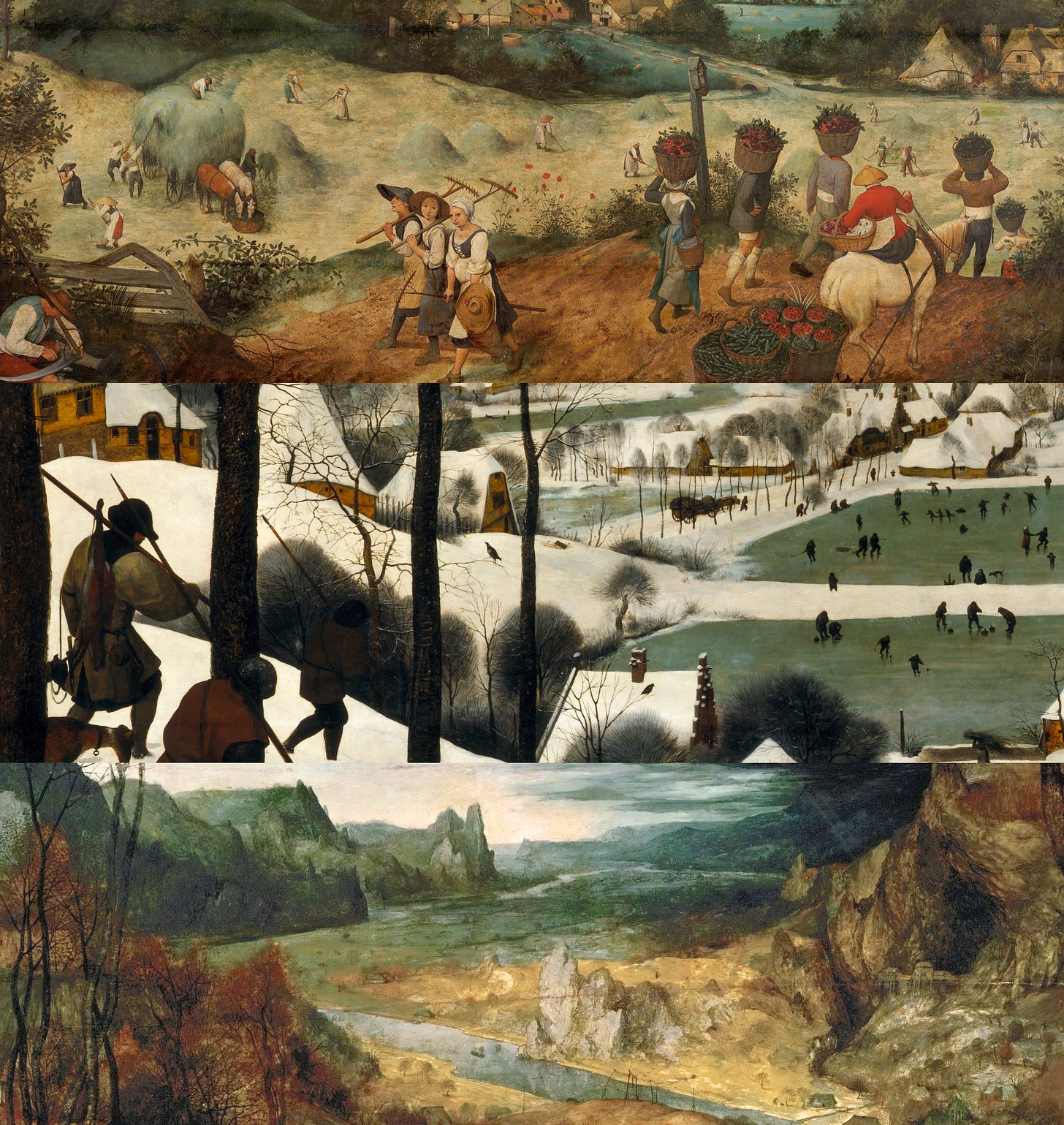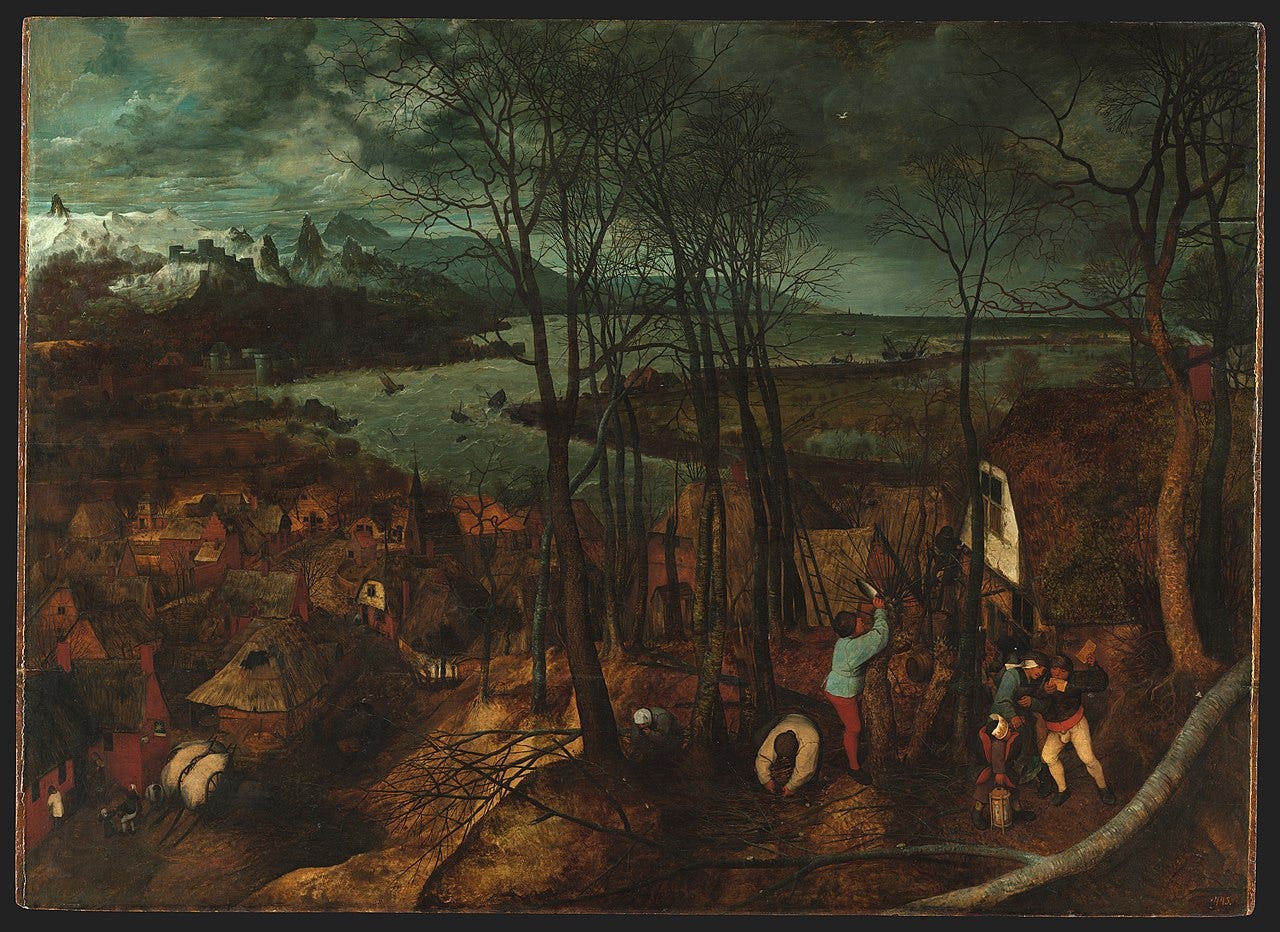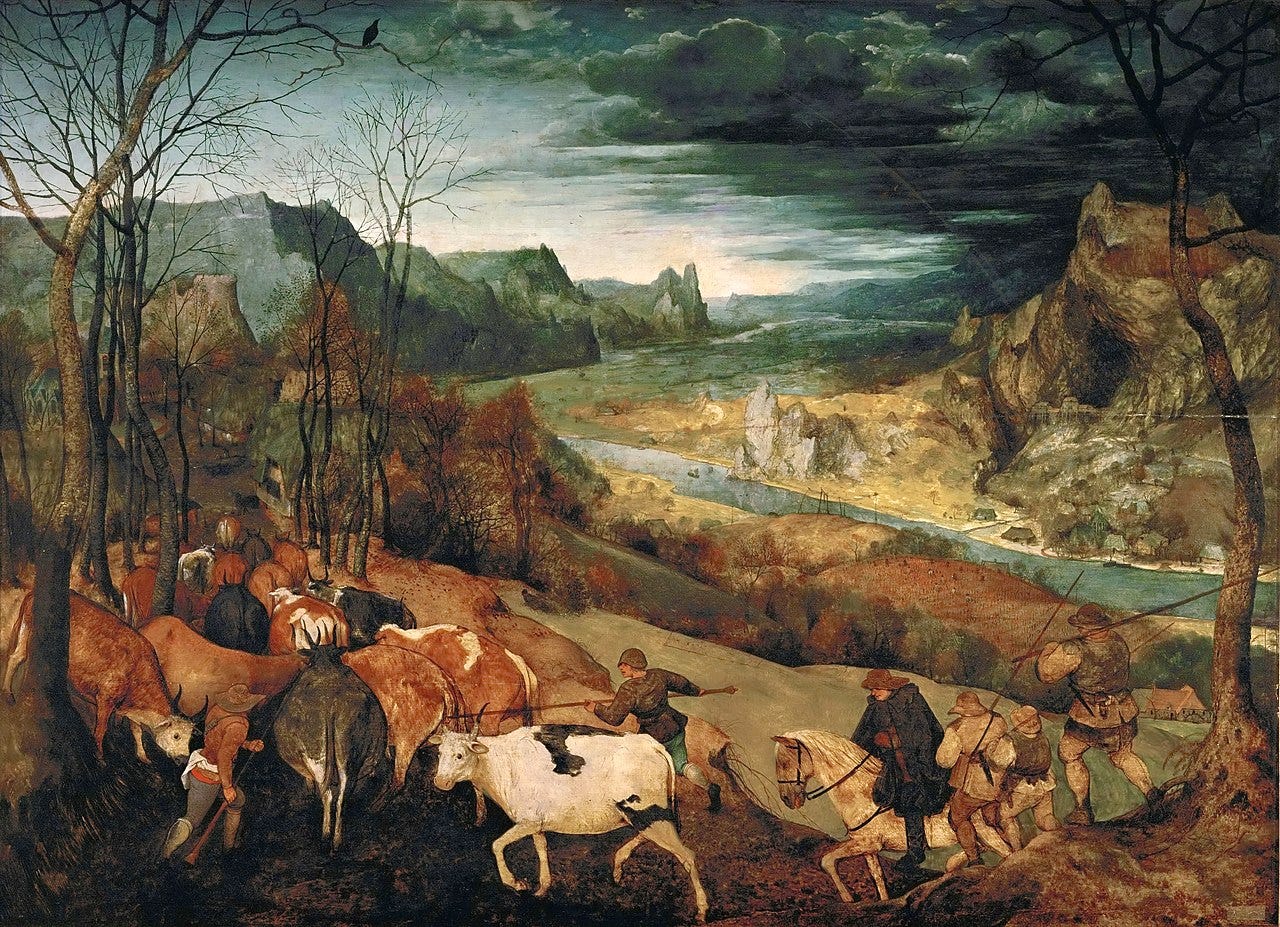In 1565, Pieter Bruegel the Elder was approached by one of his wealthiest patrons for a special commission.
Nicolaes Jonghelinck - a merchant banker and art collector from Antwerp = wanted the great master to create for him a series of works inspired by the changing seasons of a year.
And admittedly, it is still not entirely clear whether the original plan was for a full twelve works (i.e one for each month) - or, more likely, if the it was always meant for six in total, giving a kind of bi-monthly overview of a passing year.
But either way, these works were destined to become some of the most important in all of western art . . . painted on a far larger scale than was usual for the time, and pioneering a whole new genre of “landscape art”, where the focus was solely on the real/natural world as opposed to centring around an additional religious or mythological narrative.
Now we can be pretty certain that at least 6 of these works were completed as they appear in a 1569 inventory from Archduke Ernst of Austria, after he had essentially taken possession of them by force due to Nicolaes (their original patron) defaulting on his taxes.
But for some reason, when they are next mentioned in an inventory from one of Ernst’s descendants 100 years later - only five of Bruegal’s seasons are mentioned.
And ever since - despite the tantalizing prospect of many more still being out there - no other paintings from this cycle have been found.
_
So, for our little exhibition here today, I wanted to bring together all five surviving works in a roughly chronological order. based on their intended time of the year.
And for all of you aspiring art detectives - rest assured, the search is still very much ongoing for that missing painting, or any others which Nicolaes may well have hidden in order to avoid their repossession.
If any are found again . . . it really would be among the most significant rediscoveries in all of art history!
1. Gloomy Day (1565)
Kunsthistorisches Museum, Vienna, Austria.
2. The Hay Harvest (1565)
Lobkowicz Palace at Prague Castle, Prague
3. The Harvesters (1565)
Metropolitan Museum of Art, New York
4. Return of the Herd (1565)
Kunsthistorisches Museum, Vienna
5. The Hunters in the Snow (1565)
Kunsthistorisches Museum, Vienna










It's the wittily observed characters (especially in Harvesters) that I love the best
Not only beautiful and intriguing, but a snapshot of history.